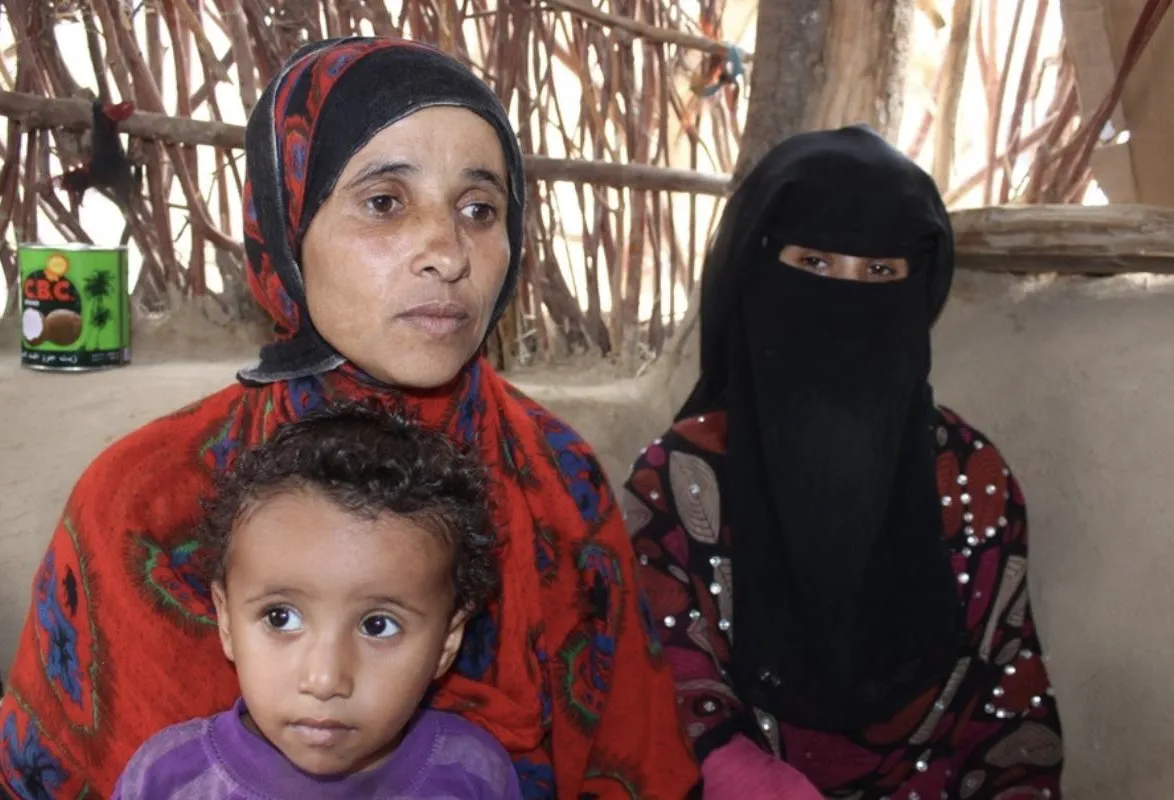SANA’A, October 14, 2020 – After almost six years of war, Yemen’s economic ecosystem has been decimated, leaving up to 20 million people food insecure. The combination of armed conflict, COVID-19, and the lack of foreign currency and salary payments has created a precarious situation in which the majority of the population would not be able to survive without humanitarian assistance.
“Economic factors have a direct and devastating impact on the availability and affordability of food,” says Aaron Brent, CARE Yemen Country Director. Food prices have been rising throughout 2020, adding to the misery of families who were already struggling. “We are seeing an increase in negative coping strategies including selling personal possessions like clothes and furniture, borrowing money, begging and using up savings. The UN has even referred to the ‘spectre of famine’.”
Food and fuel imports have significantly decreased in 2020, leading to price rises which mean people increasingly can’t afford the basics; in Sana’a, market assessments found that the price of fruit and vegetables had risen by 125 percent, and in Aden the exchange rate has reached an historic low. Intensified fighting is also limiting people’s access to food and fuel, leaving them increasingly vulnerable; hunger is most pronounced in in areas with high levels of armed violence.
Taiz governorate has seen consistent fighting through the conflict, and in the most recent Integrated Phased Classification (IPC) assessment Taiz was found to have the largest number of people in crisis or emergency food insecurity, at almost 600,000. A recently conducted CARE survey in several districts of Taiz found that for 93 percent of respondents, their livelihoods and well-being have worsened compared to before the conflict; for 96 percent there are fewer people accessing local markets; and for 98 percent the prices of food and other essentials have risen. Food and cooking fuel make up the majority of families’ spending at 54 percent.
“Taiz provides a snapshot of the situation for countless families across Yemen,” says Brent. “They have been dealing for years with a nightmarish combination of factors; airstrikes and attacks leading to high levels of displacement; a lack of healthcare and public services; diseases like cholera and dengue fever; and of course severe food insecurity and hunger due to the economic crisis. The result is that people are hungry and malnourished and their ability to cope is extremely low.
“In addition to the economic factors affecting food security in Yemen, the humanitarian response is severely under-funded, with only 42 percent received of the 3.2 billion USD required. In order to prevent people from slipping further, we need to see a massive increase in funding, as well as injections of foreign currency and a rise in imports. When the international community stepped up in 2019, we managed to avert famine; this needs to happen again, while remembering that the only way to end hunger in Yemen for good is to end the conflict through a nationwide ceasefire, and an inclusive political solution.”
CARE reached 2.8 million people in the last year across 13 governorates and 95 districts, including supporting 1.5 million people with food, cash and vouchers to meet their basic and immediate food needs.
__________
Yemen IPC explained
An Integrated Phased Classification (IPC) assessment conducted in 13 governorates in 2020 found that 3.2 million people were in either crisis (IPC3) or emergency (IPC4) food insecurity. This means that levels of acute malnutrition are either above normal or very high and that people are using negative coping mechanisms including selling assets and belongings to be able to feed their families.
· When 20 per cent of people in an assessed area are facing IPC 5 conditions, an official famine is declared. Although no areas in Yemen currently meet that threshold, urgent action is needed to ensure Yemen does not slip into catastrophic food insecurity. Two of the thresholds needed to declare a famine – death rates and acute malnutrition rates – are ‘lagging’ indicators, which means that by the time these thresholds are met, people are already dying.
· Phase 3 denotes ‘crisis’, and means food consumption gaps with high or above usual acute malnutrition or are marginally able to meet minimum food needs only with accelerated depletion of livelihood assets that will lead to food consumption gaps.
· Phase 4 is classified as emergency and means that even with humanitarian assistance at least one in five households in the area have large food consumption gaps resulting in very high acute malnutrition and excess mortality, or extreme loss of livelihood assets that will lead to food consumption gaps in the short term.
· Phase 5 (famine) means that two in ten thousand people are dying of starvation daily, that at least a fifth of households face an extreme lack of food, and that more than 30 percent of children under 5 are suffering from acute malnutrition.

